Important bronze bust with brown patina , representing the goddess "Diane" , by sculptor Alexandre Falguiere (1831-1900) .
Diana , in Latin "Diana" , daughter of Jupiter and twin sister of Apollo , was originally a Latin goddess with power over procreation, childbirth , hunting , wildlife, chastity and sovereignty . Her most important sanctuary , located in Aricie , also served as the centre of the Latin confederation before Rome took over .
She quickly became the goddess of hunting and the moon in Roman mythology after her assimilation into the Greek pantheon's goddess Artemis during the Lectisternium of 399 BC .
Diana , the moon goddess , as a counterpoint to her brother , the sun god , is often depicted with a crescent moon halo on her head , as seen here .
The antique inspiration is evident in her triumphant nudity , reserved for the gods , the classicism of her features and the refined modelling of her silhouette .
The sculptor's signature "A. Falguière" is engraved on the back of the bust , along with the circular stamp of the foundry "THIEBAUT FRÈRES FONDEURS PARIS" .
Antique sculpture from the second half of the 19th century .
Perfect condition with a beautiful patina .
Dimensions : 60 cm x 38 cm
Alexandre Falguiere (1831-1900)
Alexandre Falguiere , born September 7, 1831 in Toulouse , is a famous French sculptor and painter .
Seeking to improve his income with a view to entering the School of Fine Arts in Paris , he was first hired in the then very prosperous company of the sculptor Albert-Ernest Carrier-Belleuse (1824-1887) , then worked with Jean-Louis Chenillion (1810-1875) .
Approaching the age limit for admission to the Fine-Arts in Paris , he finally decided in 1854 to enter .
Admitted to the Workshop of François Jouffroy , Alexandre Falguiere was the winner , with Leon Cugnot , of the first Rome Grand Prix for sculpture in 1859 with his bas-relief "Mézence wounded , preserved by the intrepidity of his son Lausus" .
He boarded at the Villa Medici in Rome from 1860 to 1864 , where in 1861 he met his fellow Toulouse resident Raymond Barthelemy (1833-1902) , a former student of Griffoul-Dorval like him .
In 1864 , he sent to the Artists' Fair , which is held every year in Paris , the fruit of his Italian work , the sculpture of "Winner in Cockfight". The success is immediate .
Emperor Napoleon III , purchased the original bronze sculpture .
She measures one meter seventy-four and is kept at the Orsay Museum .
The sale of these sculptures ensures Alexandre Falguiere a comfortable income , and places him in the position of a prominent artist .
Alexandre Falguiere was then part of a group of sculptors, with "Paul Dubois" , "Antonin Mercie" and "Alexandre Moulin" , who were nicknamed "The Florentins".
As in the city of Florence during the Renaissance , these sculptors draw their themes from Antiquity .
In 1882 , A.Falguiere was appointed professor at the School of Fine Arts in Paris , and elected member of the Academy of Fine Arts .
Falguiere's students included "Antonin Mercié" , "Laurent Marqueste" , "Gaston Schnegg" , "Camille Crenier" , "Achille Jacopin" , "Maurice Bouval" and "Jean-Marie Mengue" , the most famous of these being "Antoine Bourdelle" .
Alexandre Falguiere was promoted to Commander of the Legion of Honor in 1889 .
In 1898 , A.Falguiere received the order for the Monument to Balzac , after the refusal of that of Auguste Rodin , by the Society of People of Letters , its sponsors .
The affair caused a scandal that the press called the "Second Dreyfus affair" because Emile Zola supported Auguste Rodin .
To prove that this episode in no way damaged their friendship , Falguiere created the bust of Rodin for the Salon of 1897 , and for his part Rodin sculpted a bust of Falguiere .
Alexandre Falguière died on April 19 , 1900 at his home at 68 , rue d'Assas .
He is buried in Paris at the Pere-Lachaise Cemetery .
























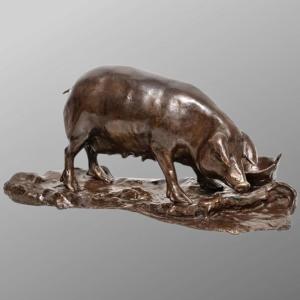
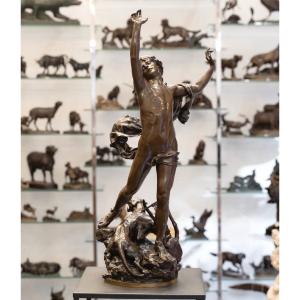







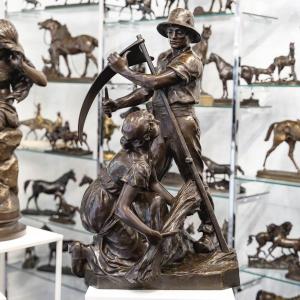



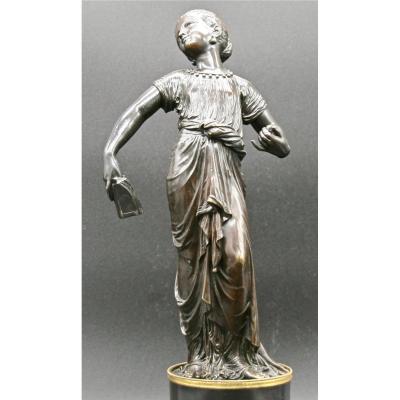

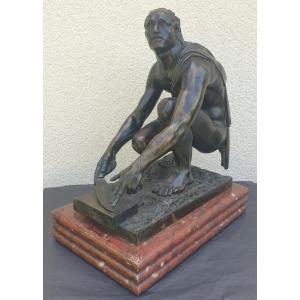




 Le Magazine de PROANTIC
Le Magazine de PROANTIC TRÉSORS Magazine
TRÉSORS Magazine Rivista Artiquariato
Rivista Artiquariato